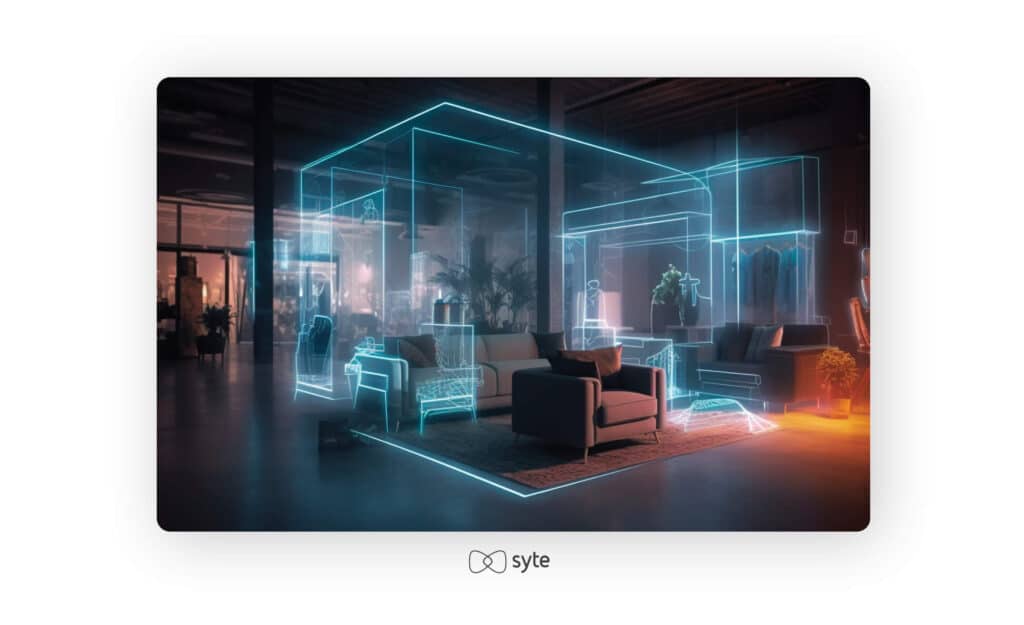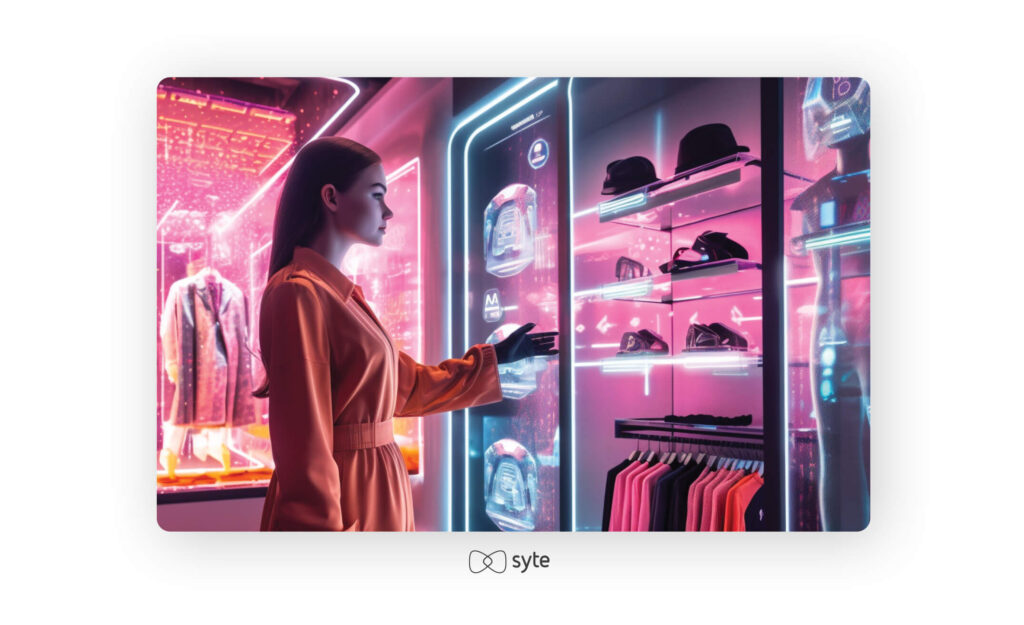Generative AI has captivated our society because it opens a portal into the power of our imagination.
What if you could just think of something, imagine it clearly, and suddenly, there it is? This new reality, rife with possibility, has unleashed tremendous innovation across various industries, and retail is no exception.
In this article, we’ll delve into the world of generative AI and uncover how your brand and customers can benefit from adopting this cutting-edge technology.

Unraveling the Mystery: What Is Generative AI?
In a nutshell, generative AI is a type of artificial intelligence that uses a form of deep learning called generative adversarial networks (GANs) to craft new content based on user input. This trailblazing technology can generate a variety of content — from text and images to code, audio, video, and even 3D models.
Harnessing Generative AI: Top Use Cases in Retail and eCommerce
Generative AI offers numerous opportunities to boost brand loyalty, increase conversion rate, enhance shopper satisfaction, and reduce costs. In this section, we’ll delve into some of the most impactful use cases where generative AI can make a difference in retail and eCommerce.
Make It Personal: Increase Loyalty by Exceeding Customer Expectations
Your shoppers are your top priority, and it’s essential to make them feel valued. A recent Epsilon study revealed that 80% of consumers expect tailored experiences, and one way to achieve this is by providing personalized experiences.
A group of researchers set out to prove how this could be done with generative AI. They used the technology to create personalized product titles for eCommerce, making user experiences more tailored and engaging.
The team used real data from a popular Chinese Fashion eCommerce website and compared the performance of their proposed PPGAN (Personalized Pointer Generative Adversarial Network) model with other models. To test its real-world impact, the researchers conducted an A/B/C test in a scenario with over 2 million daily active users. After one week of testing, the results showed that the PPGAN method improved the click-through rate by 5.18% and 3.53% compared to the other models.
These findings confirm that users are more likely to engage with products featuring short titles generated by the PPGAN model, emphasizing the potential of generative AI to enhance personalization and customer satisfaction in retail and eCommerce.
Another way to enhance your brand’s appeal is through personalized recommendation engines.

Picture a style concierge who understands your taste, and body type and stays up-to-date with the latest trends, offering a highly customized experience. Research in the field of generative AI has primarily focused on improving recommender systems, with more recent advancements in deep learning enabling eCommerce platforms to better interpret external data, learn from it, and adapt recommendations accordingly.
As AI-powered chatbots and voice assistants become more prevalent, there’s a growing interest in conversational recommender systems that provide personalized suggestions through natural language interactions.
By harnessing the power of generative AI in recommendations, brands can create more engaging and tailored experiences that cater to individual shopper needs and preferences, ultimately driving satisfaction and loyalty.
Dynamic Designs: Revolutionize Product Development With AI-Generated Images
While ChatGPT remains the generative AI poster child, text generation is not the only thing generative AI can do. Over the last year, we’ve seen text-to-image technologies, like Dall-E and Midjourney, creating impressive AI artworks. If you take this to the world of retail, text-to-image technologies can generate photorealistic images and simulations of anything you can put to words, leading to new possibilities for product development and modeling.
Designers can now ideate rapidly, providing sketches, patterns, and other references and instantly receive realistic images and new concepts in return. Marketers can tailor product photography backgrounds to consumers’ tastes and preferences. And brands can seize the opportunity to collaborate on new collections more efficiently.
For instance, jewelry designers can generate designs in several variations and let their followers vote on them via Instagram Stories. This helps reduce simulation costs and gathers real-time customer feedback to produce pieces that appeal to followers.
The impact of generative AI on consumer perception is noteworthy. In a study examining Gen Z consumers’ evaluation of fashion products designed using GANs, researchers discovered that consumers were willing to pay more for GAN-generated products compared to non-GAN-generated ones. Interestingly, the evaluation of functional value, emotional value, and willingness to pay was highest when GAN technology was used but not disclosed to consumers. This suggests that while GAN-generated designs are attractive to consumers, explicitly mentioning the use of AI might not always be beneficial.

Supreme Service: Say Goodbye to Customer Support Hassles With AI-Powered Chatbots
Your buyers crave top-notch, personalized shopping experiences. Cumbersome, scripted support bots and never-ending call center menus just won’t cut it. By eliminating support friction, you can turn a customer service hiccup into an opportunity to win loyalty.
This is where AI chat agents come in handy. These next-generation chatbots use Large Language Models (LLMs) to answer questions such as “I received the wrong color,” “I need to replace this item, or “Where is my product?” allowing shoppers to communicate with them as naturally as they would with a human representative.
By integrating AI-powered chatbots into your customer service strategy, you not only save time and resources but also create a seamless experience that leaves a lasting positive impression on your buyers. These intelligent agents are always available, providing immediate assistance that cut the need to wait in long queues or navigate complex support channels.
Furthermore, AI chatbots are capable of learning and improving over time, which means they’ll only get better at addressing your shoppers’ needs. This continuous improvement ensures that your support protocol remains up-to-date and relevant, adapting to the evolving expectations of modern consumers.
Keeping Up With the Future of Retail
In today’s fast-paced retail and eCommerce landscape, businesses need to adapt and innovate to stay ahead. By leveraging the power of generative AI, you can revolutionize your brand’s operations, ranging from personalizing experiences to streamlining product development, enhancing customer support, and more. As AI technology advances, it will continue to reshape the industry, providing brands with new opportunities to deliver exceptional value to their customers. It’s time to embrace the potential of generative AI and position your brand as a leader in the rapidly evolving world of retail and eCommerce.